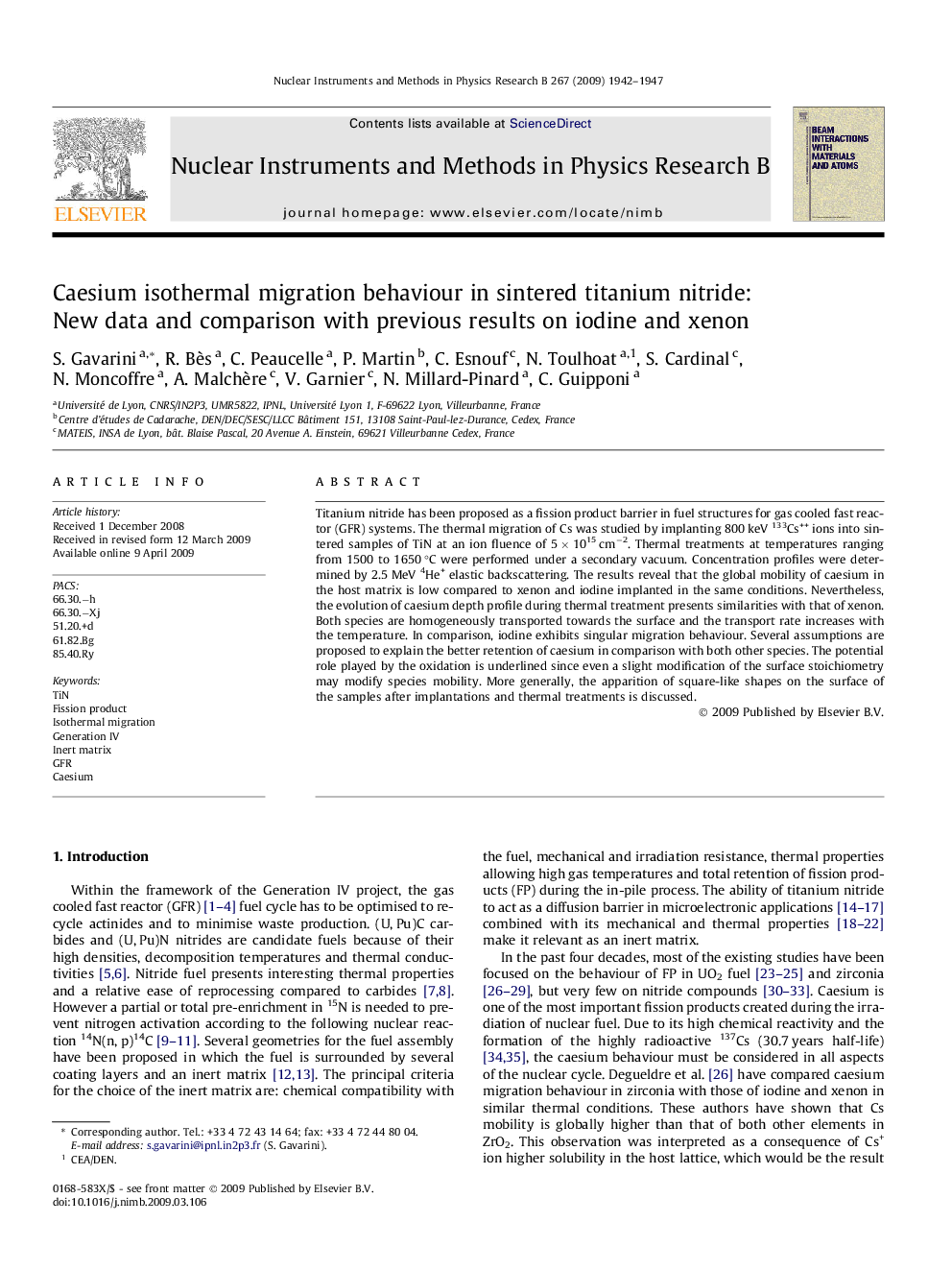| Article ID | Journal | Published Year | Pages | File Type |
|---|---|---|---|---|
| 1685069 | Nuclear Instruments and Methods in Physics Research Section B: Beam Interactions with Materials and Atoms | 2009 | 6 Pages |
Titanium nitride has been proposed as a fission product barrier in fuel structures for gas cooled fast reactor (GFR) systems. The thermal migration of Cs was studied by implanting 800 keV 133Cs++ ions into sintered samples of TiN at an ion fluence of 5 × 1015 cm−2. Thermal treatments at temperatures ranging from 1500 to 1650 °C were performed under a secondary vacuum. Concentration profiles were determined by 2.5 MeV 4He+ elastic backscattering. The results reveal that the global mobility of caesium in the host matrix is low compared to xenon and iodine implanted in the same conditions. Nevertheless, the evolution of caesium depth profile during thermal treatment presents similarities with that of xenon. Both species are homogeneously transported towards the surface and the transport rate increases with the temperature. In comparison, iodine exhibits singular migration behaviour. Several assumptions are proposed to explain the better retention of caesium in comparison with both other species. The potential role played by the oxidation is underlined since even a slight modification of the surface stoichiometry may modify species mobility. More generally, the apparition of square-like shapes on the surface of the samples after implantations and thermal treatments is discussed.
